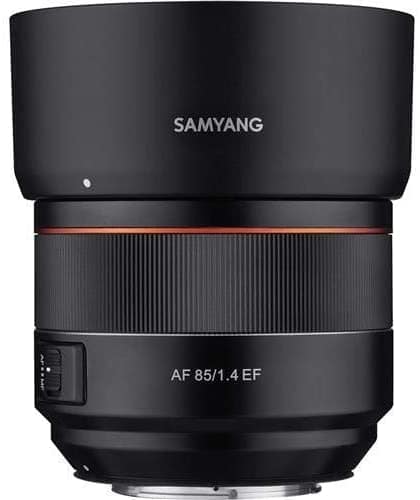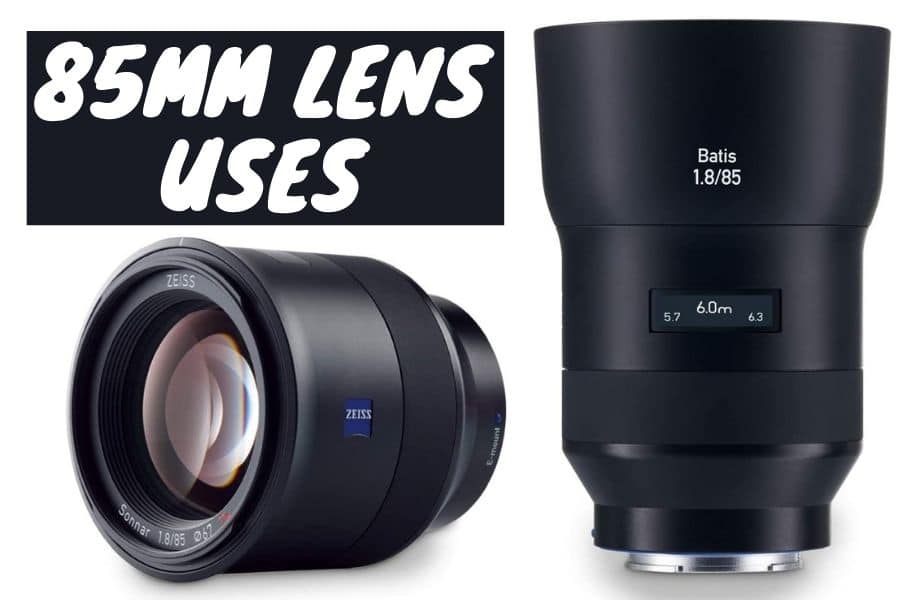As an Amazon Associate I earn from qualifying purchases.
The 85mm prime lens is well-known for its ability to capture stunning portraits. It’s also a great event lens because of its low weight, quick speed, and wide aperture. The 85mm, on the other hand, is sometimes neglected as a useful instrument in the nature photography armory. The 85mm telephoto lens is a genuine telephoto lens with a narrower field of view, magnification, and compression.
A wide-angle lens makes everything appear distant and spread out. A telephoto lens has the reverse effect, making everything appear closer and less spread out while also giving better subject-background separation (at lower apertures). So, as we continue our examination of many common focal lengths and their distinct qualities, what better topic to investigate than the widespread use of 85mm lenses?
Contents
What is 85mm Focal Length?
Portrait photographers love the 85mm lens for its long focal length and narrow depth of focus. Many photographers use it as their primary focal length lens during a session. It has a minimum focusing distance or focal length of around 2.8 feet from the desired focal point.
While you’ll have to pace further back than you would with a 35mm, the narrow depth of focus has the ability to give you the bokeh and creamy backdrop that many photographers crave. The 85mm focal length and depth of field are ideal selections if you want your subject to be magnified in your full-frame camera.
Uses of 85mm Lens
Camera lenses frequently distort images or do not produce the compressed effect that you need in your photos. This combines great image quality, artistic blur, and very little image distortion. Listed below are the different uses of 85mm lenses.

Distortion
What precisely is distortion? It’s essentially when lines begin to bend. These lines tend to bend in a variety of directions, similar to how they do with a fisheye lens. When it comes to faces, wide-angle lenses can distort facial features, making them appear larger or deformed than they normally are. If you want consistency and precision, these lenses are a fantastic pick since they appropriately picture human faces with very little distortion.
The image below illustrates how the lens captured the human face without distortion and on a perfect portrait background.
Bokeh or Compression
The compression and bokeh capabilities of this option are widely recognized. To simplify, the 85mm lens makes the backdrop look closer than it actually is while letting the subject stand out. Your attention is brought to precisely where you want it to be because of the compression and bokeh!
Your maximum aperture must be more “open” to maximize background blur. So, if you want to go for the maximum effect, consider f-stops of 1.2 to 2.0!
Focus your attention on the leaves in this image. It demonstrates the compression that may be obtained when shooting at a wide or fast aperture. The leaves depict the various depths that a single camera lens may acquire.
Low Light Photography
In low-light circumstances, this choice is ideal. Why? It has a propensity to “enable” more light when compared to other models. I’ll save you the math, but dividing the focal length by the fast aperture yields a light “area.” As a result, the smaller the aperture, the more light the full-frame camera will be able to capture. An 85mm 1.4, for example, will produce greater results than a 50mm 1.4.
Our full-frame cameras contribute to the lighting outcomes as well, but this one provides an additional dimension!
Aside from the light shining into the tank, this friendly piranha photograph was taken in an aquarium with virtually any light. It was captured using an 85mm SigmaArt lens at ISO 3200, f/3.5, and 1/125s shutter speed.
Universal Options
The 85mm is well-known as an excellent portrait lens, but many people are unaware that it is also a short telephoto lens! When capturing animals, it is used by many landscapes and wildlife photographers. It’s ideal for headshots, portraits, landscapes, weddings, and celebrations, and it may even be utilized for macro photography in some circumstances. Basically, it’s a great option all around! Beautiful shots captured using this lens for different events are displayed below.
The image above brilliantly displays a headshot that captures the primary aspect of the image while blurring the foliage to provide an added depth to an already beautiful image.
This photograph depicts a lovely portrait of a couple on their wedding day with a rather soothing background.
The preceding photograph was taken with an 85mm lens and captures the subject of focus flawlessly in low light while accentuating the many colors and concert lights. It is ideal for any occasion as well as concerts when low light is an issue.
With an 85mm lens, a beautiful view of the mountains was shot, vividly displaying every element of nature.
Read next: What Lens Is Best for Portraits
Advantages of 85mm Lens
The 85mm lens covers a diverse range of features that make it possible to take high-quality images for a variety of occasions or even for personal use. The benefits of utilizing this lens are explored below.
- The 85mm prime lens fosters a methodical, creative mentality in constructing photographs for outdoor and nature photography as a prime lens.
- Regardless of lens type, an 85mm prime lens (or any prime lens) drives practices that will improve our general photographic skills, including wildlife photography.
- When photographing animals with telephoto zoom lenses, image composition happens quickly. The subjects dart, jump, fly, hop, and sprint from direct sunshine to shade in a couple of seconds. To capture our subjects properly, we need to move rapidly, think quickly, and alter our settings swiftly. Rather than nature taking the lead, the photographer takes control.
Tips for Using an 85mm Lens
- Relax, observe, listen, and breathe- What do you think the bigger picture looks like? What caught your sight and sparked your interest in the image? The 85mm prime lens helps us to examine the subject attentively while remaining aware of its environment.
- Step Out, Step In- When working with a fixed focal length, the feet take on the role of zooming. Walk closer to the object while framing it to catch the first feature or details that struck your eye. To take in the complete scene, take a step back. Don’t overlook the importance of the foreground and background in framing your subject!
- Move Up or Down- What options do you have when it comes to studying your subject? Is there a nearby hill that I could hike up or down to get a better view? Investigate all possibilities and astonish your audience!
Conclusion
Overall, 85mm lenses are a terrific addition to any photographer’s equipment, regardless of brand! You may use it on any occasion because of its astounding universality and clarity! If you’re looking to add depth to your portfolio, the 85mm prime lens is an excellent choice. The above-mentioned use of an 85mm lens and recommendations will assist you in improving the quality of your photographs.
As an Amazon Associate I earn from qualifying purchases.

